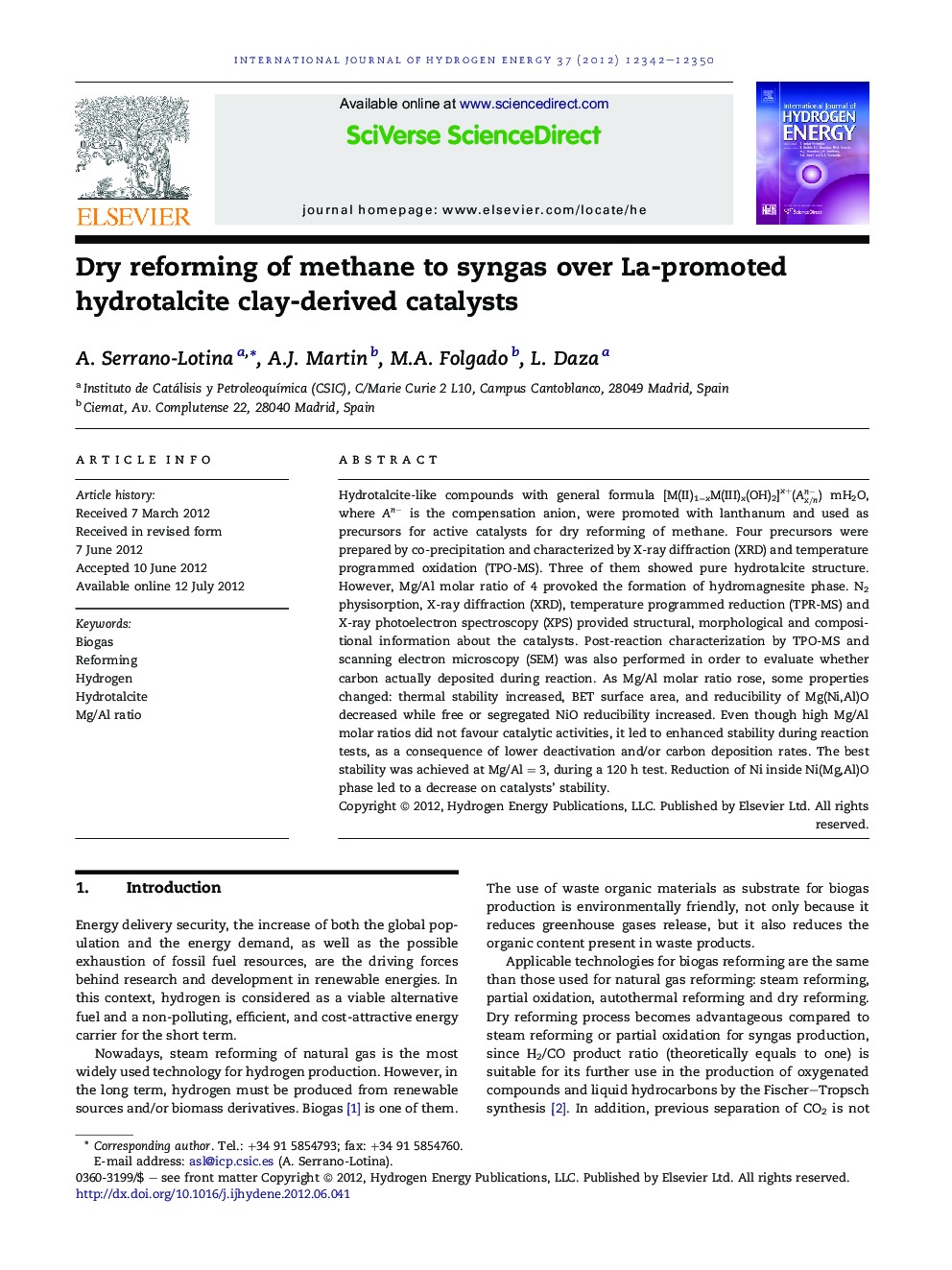| Article ID | Journal | Published Year | Pages | File Type |
|---|---|---|---|---|
| 1271069 | International Journal of Hydrogen Energy | 2012 | 9 Pages |
Hydrotalcite-like compounds with general formula [M(II)1−xM(III)x(OH)2]x+(Ax/nn−) mH2O, where An−An− is the compensation anion, were promoted with lanthanum and used as precursors for active catalysts for dry reforming of methane. Four precursors were prepared by co-precipitation and characterized by X-ray diffraction (XRD) and temperature programmed oxidation (TPO-MS). Three of them showed pure hydrotalcite structure. However, Mg/Al molar ratio of 4 provoked the formation of hydromagnesite phase. N2 physisorption, X-ray diffraction (XRD), temperature programmed reduction (TPR-MS) and X-ray photoelectron spectroscopy (XPS) provided structural, morphological and compositional information about the catalysts. Post-reaction characterization by TPO-MS and scanning electron microscopy (SEM) was also performed in order to evaluate whether carbon actually deposited during reaction. As Mg/Al molar ratio rose, some properties changed: thermal stability increased, BET surface area, and reducibility of Mg(Ni,Al)O decreased while free or segregated NiO reducibility increased. Even though high Mg/Al molar ratios did not favour catalytic activities, it led to enhanced stability during reaction tests, as a consequence of lower deactivation and/or carbon deposition rates. The best stability was achieved at Mg/Al = 3, during a 120 h test. Reduction of Ni inside Ni(Mg,Al)O phase led to a decrease on catalysts' stability.
► We used La-promoted hydrotalcite as catalyst precursors. ► The catalysts were tested for dry reforming of methane to syngas. ► An increase on Mg/Al molar ratio decreased catalytic activity. ► Partial reduction of Ni present in the Mg(Ni,Al)O phase reduced catalyst stability. ► Very good stability was achieved by the catalyst with nominal Mg/Al molar ratio of 3, after 120 h of reaction.
